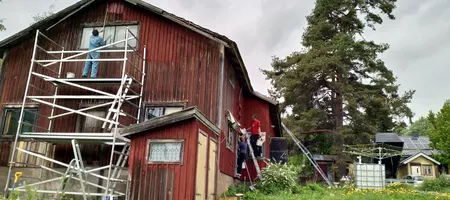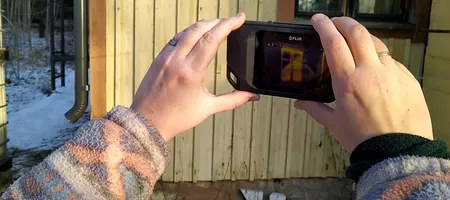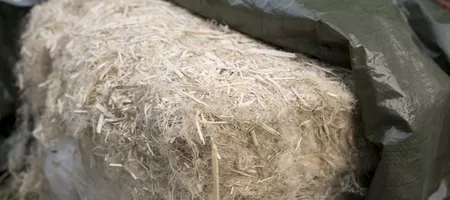Our fresh water pipe enters the house sideways, which means we have a small hut attached to the house, in which the water pipes comes in from below ground and enter the house through the wall. This is pretty practical in a Rintamamiestalo. A Rintamamiestalo sits on a concrete socket, so there is about a meter high air-gap between soil ground and the ground floor of the house. Imagine that your water pipe freezes and you have to go below your house in order to unfreeze it. This could be a total nightmare in winter times, working at -20 °C outside, in the dark small space under the house.
Checking the current state of the insulation
Good luck the former owner, Lumias father (buy the way, Esko was a great artist), put some thought into it and built the hut. He also thought about electric pipe heating. He basically used an in-pipe heater, which was great, but at some point stopped working, kaput. The electric work behind that in-pipe heating is pretty outdated and that made it difficult for me to fix. Some time ago, we were at the States, our friend Dave Leutner showed us a self regulating heat tape. I remembered that and we went shopping for it at Motonet. We didn't get the actual heat lace, a newer version heat tape, but a water pipe heating tape. The water pipe heating tape uses up more current than the new heat laces.
Around the pipe there was a lot of mineral insulation and as the T-connector that connected the in-pipe heating was untight, the mineral wool was sucked full of water and also showed parts of moulds growing on it.
Installing the pipe heating
At a sunny day I put my respiration mask, gloves and a painters protective suit on and removed all the mouldy stuff. After that the plumber who was currently working at our bathroom tightened the T-connector. After that I went outside and put the heat tape around the pipe as described in the heat pipe manual. As this would not be enough I first put some PE-insulation around it. After that I put Styrofoam pipe insulation around it. So we got some good levels of insulation going.
Measuring the temperature
I connected the heat tape without a thermostat. As the heat tape is self regulating it won't get warmer than 20°C, but it would be really interesting to restrict the temprature range. This could save a lot of electricty, hence money. Let's say the heat tape should start when the pipe temperature drops below 2°C and should stop heating when it goes above 8°C. Wouldn't that be cool?
At the moment I have a self created temperature measuring device attached that checks for the temperature directly on the pipe and also for the temperature of the surrounding. Those two tempreatures get logged on a small local server and can be checked from any smartphone / computer that has access to the LAN. When the temperature reaches 4°C I go outside and manually unplug the heat tape. Not that much of a sophisticated solution but currently good enough.
Heat tape + thermostat
So the next steps are integrating a relais into the application and attaching the heat tape to the relais. Then I have to write code so that it fulfills the desired function. I also want to see that the heat tape is on or off. So there is a lot of work ahead of me.








